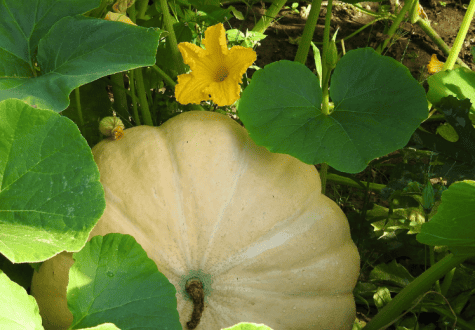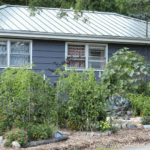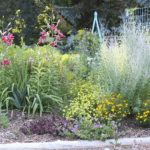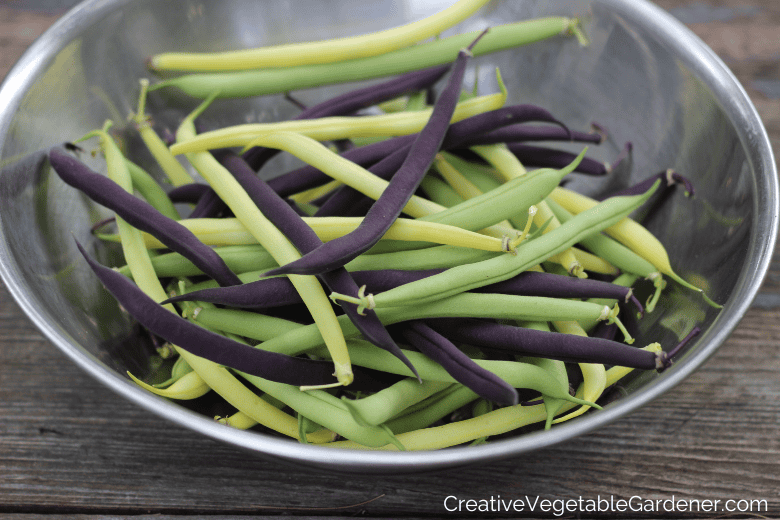
True fact: I rarely buy green beans from the grocery store. I find them to be waxy and virtually tasteless most of the time. They’re one of the vegetables I only eat during their growing season. That’s why I think they’re one of the most “worth it” vegetables to grow in your garden.
One of the biggest decisions to make when planning out your bean growing is thinking about bush beans vs pole beans. How do you decide which one to grow? In this article we’ll dive into the pros and cons of each and then I’ll share my experience and how I’ve chosen which to grow in my garden.
But, before we get into the specifics, let’s clear up a common confusion – snap beans, string beans, and green beans all refer to the same vegetable. The terms are interchangeable, so you can use whichever one you’d like!
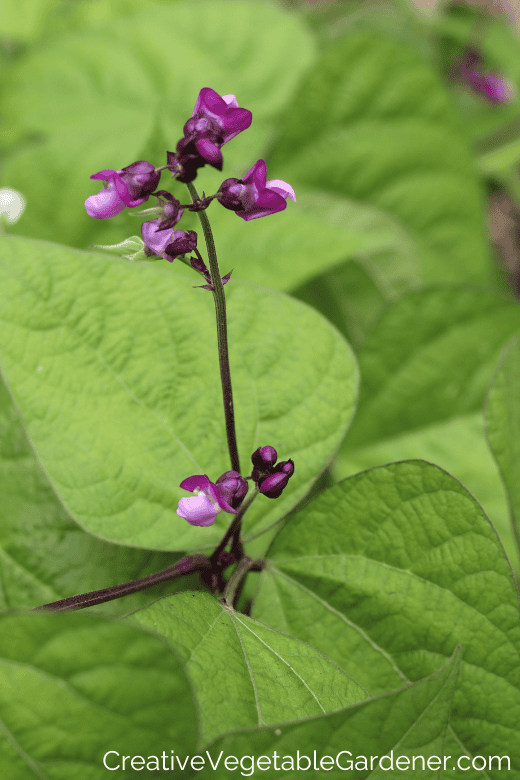
Exploring the Differences Between Bush Beans and Pole Beans
When you’re thinking about which type of beans you want to grow in your garden, bush or pole, it’s critical to know the differences between the two.
One of the major ones is the growing habits of each.
Bush beans, like the name implies, are a low growing, compact plant that gets about 20” tall. Pole beans, on the other hand, are a vining or climbing variety of bean that can reach about 6’ in height and require a trellis to support the plant.
The second difference is the length of time they produce beans.
Both types of beans are generally ready to harvest somewhere around 60-75 days from planting, depending on variety.
But, once they start producing beans for harvest is where these beans diverge.
Bush beans ripen within a window of a few weeks, depending on weather and the conditions in your garden. This means that you will likely have large harvests of ripe beans each week during the harvest period.
If you’re planning on canning, freezing or fermenting your beans, this could be great for you. But, if you just want to eat fresh beans a few times a week, you may have way more than you can possibly use. (We’ll talk more about ways to avoid this later in the article.)
After a few weeks, the bush bean plants start to produce less and less beans, eventually stopping production completely.
In contrast, when established pole bean plants start producing, their harvests tend to be smaller, but they will continue to grow new beans the entire season until your first frost. The consistent smaller harvests from pole beans may be a better fit for you if you’re more interested in fresh eating vs. the processing that may come with large bush bean harvests.
So, a few questions to ask yourself when deciding bush beans vs pole beans:
How much space do you have?
- Bush beans are usually planted in rows.
- Pole beans need to be trellised, which is convenient for small spaces.
Do you want larger harvests for a shorter amount of time or smaller harvests for a longer period?
- Bush beans produce a harvest for several weeks and then tamper down and eventually stop.
- Pole beans will keep flowering and producing beans until your first frost.
Personally, I prefer bush beans vs pole beans in my garden. I like to use my trellises for other more important (to me!) crops like winter squash and cucumbers. I also don’t love harvesting beans because I have to check on them often so they don’t get overripe. I lose patience with pole beans after a few weeks and often stop harvesting them anyway.
I like eating beans during the height of summer, but to be honest, they’re not one of my favorite vegetables, so I don’t mind that they have a shorter harvest window.

When to Plant Green Beans
Green beans are not a frost tolerant plant. As a gardener, it’s essential to know your average last frost date. Ideally, you’re using a planting calendar that helps you know what to plant week by week in the spring. (Print and create your own custom planting schedule.)
Where I live in zone 5, (Madison, WI) my average last frost is around May 15. I always wait until at least this date to plant my bean seeds. And to be on the safe side, I always check the ten day forecast before planting to make sure there is no potential for frost.
Beans are reliable germinators if your soil temperature is 70-80 degrees F. The warmer the soil is the more quickly they’ll germinate, sometimes in less than a week.
As I shared above, I prefer bush beans vs pole beans. But, to partially try to counteract the fact that they produce a lot of beans all at once, I often plant them in succession.
Rather than plant out an entire raised bed of green beans, I’ll plant half the bed and then wait three weeks before planting the remaining half. The first succession will flower and produce beans for a few weeks and as they’re starting to taper off the second succession is just starting to gear up.
Spreading out my planting allows me to extend my harvest and at the same time avoid having an excess amount of beans to eat at one time. I tend to eat most of my beans fresh during the harvest season vs canning or freezing them.
One caveat – it’s important to keep in mind the amount of time it takes for beans to be ready to harvest. If you plant too late in the summer, your beans may not have enough time to reach the 60-75 days needed to ripen.
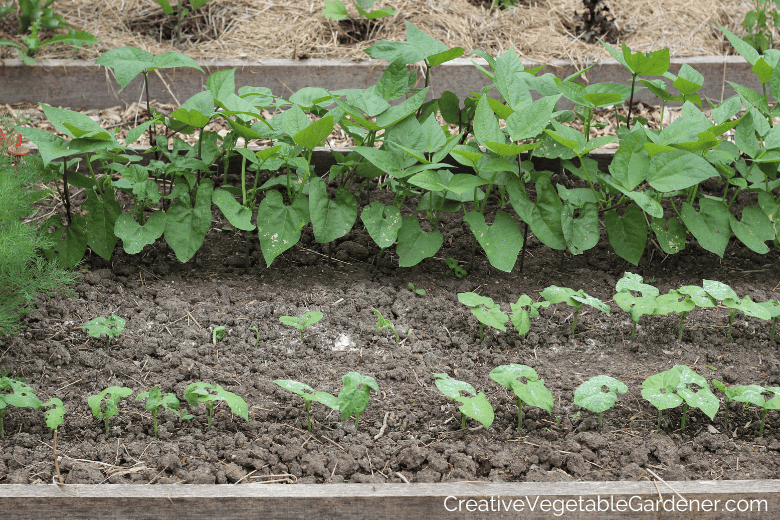
How Far Apart to Plant Green Beans
Most bush bean seed packets will instruct you to sow seeds about 1″ deep, spaced 2″ apart, in rows 20–36″ apart. Pole beans seed packets will instruct you to sow seeds 1″ deep, spaced 3″ apart, in rows 4′ apart.
I tend to plant my beans (and many other vegetables) a bit closer than the back of the seed packet suggests. Most of my raised garden beds are 3 ½ – 4’ wide.
In my 4’ beds I plant four rows of bush beans down the length of the bed. Depending on the width of the bed you may decide to squeeze another row of beans to maximize space. In my 3 ½’ beds I plant three rows down the length of the bed.
Germination of beans ranges from 8-16 days. The warmer your soil is the more quickly they’ll germinate. Seeds that are waiting to germinate need to remain consistently moist, so make sure you water at least once a day in the morning or evening, more if the weather is hot and dry.
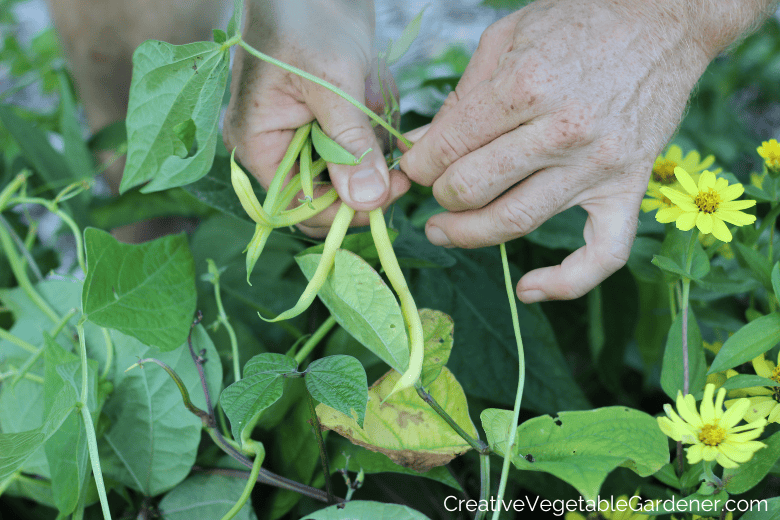
Tips for Growing Bush Beans
After germination, you can scale back on the watering, depending on your climate and soil conditions. Most vegetables need 1” of water per week, from either rain or you watering your garden.
Pay particular attention to making sure your plants are getting the water they need during flowering. Read more about how to water your vegetable garden the right way.
I highly recommend mulching the soil between the plants once they germinate to trap in soil moisture and suppress weeds. As soon as the row germinates I tuck vegetable garden mulch up to the edge of the plants.
Flowers will begin appearing on your bean plants in about six to eight weeks. Depending on the variety of bean, you can expect to begin harvesting at around 65 days.
Harvest the beans when the beans get to be about five inches in length and the skin is still smooth. Avoid allowing the beans in the pods to develop and cause the skin to bulge. This is a sign the beans are getting overripe and will be tough, not tender.
Ripe beans should pull free of the plant. Try and avoid tugging on the ripe fruit, but rather break the beans off their tendril with your thumb while holding the fruit. Ripe beans will snap when bent in half.
One of the challenges of growing bush beans is you need to check the plants every one to two days for ripe beans. They grow quickly during peak production and can become overripe within a day or two.
Do Bush Beans Need Support?
Because bush beans grow to about 2’ tall, they do not need to be trellised. Plants grown with spacing around 3-6” will tend to self-support when they get bigger and can accommodate the added weight of the beans.
As we’ll talk about below, pole beans are a different story.
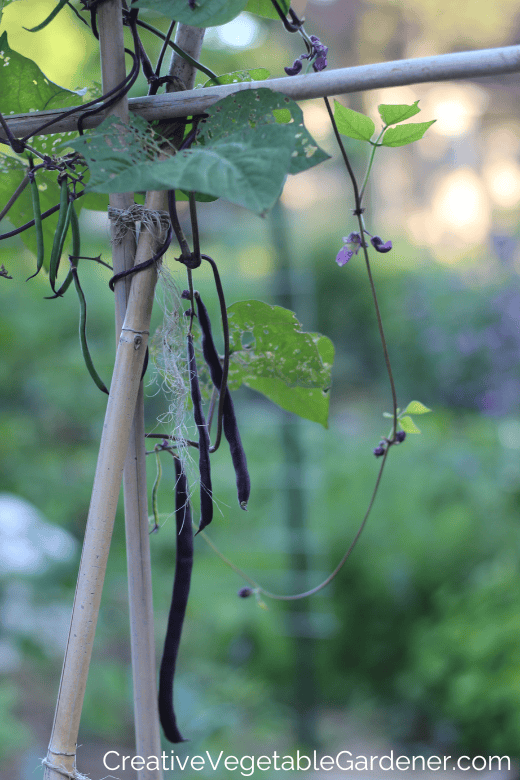
How to Grow Pole Beans
The planting, watering, and harvesting of pole beans are similar to bush beans. Where they differ is that pole beans require some form of trellis since they can grow up to 6’ tall. My preferred method is using a cattle panel trellis. In this linked article you can read about the three different styles I construct in my garden and exactly what supplies you need.
Check the vines every few days for ripe beans. Like bush beans, once the bean inside starts to become more defined the bean is getting overripe. Don’t let that happen! As long as you keep harvesting the beans the plant will continue to flower and produce beans up until your first frost.
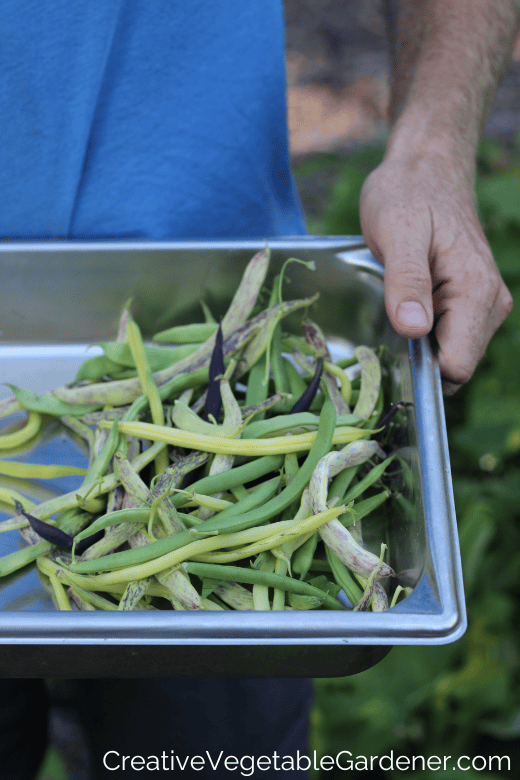
Favorite Types of Beans to Grow
The term “green beans” is a little bit of a misnomer. Green beans can also be yellow, purple and have striped patterns, too.
Adding color to my garden is always a priority, so I definitely don’t just grow green beans. Plus, you can get green beans from the grocery store all year round, so why not grow something more unique?
My favorite way to grow bush beans is to mix in purple, yellow and green seeds together in one bed. You can do this on your own by buying one packet of each of the different colors, or use Mardi Gras from High Mowing Seeds or Trilogy from Johnny’s Selected Seeds.
An added bonus is that it’s way easier to see yellow and purple beans when it’s time to harvest. And using purple and yellow beans in recipes is fun, although the purple varieties turn green when cooked.
The Trilogy mix uses Provider, Rocdor and Royal Burgundy, which are all great varieties to grow on their own as well.
Dragon’s Tongue is a beautiful bush bean I love for its colorful purple striped pattern and the sweet, tasty flavor they bring to salads when eaten fresh.
Although I don’t usually grow pole beans, I have had fun experimenting with Chinese long beans like Red Noodle.
My favorite ornamental bean to grow is the vigorous and beautiful flowering hyacinth bean. This plant has dramatic purple flowers that mature into eye-catching fuchsia colored bean pods.
Hyacinth bean is a vigorous grower and easily grows to over 15’ in length. I love growing this plant on the cattle panel trellis that arches over the entrance to my garden. The beans and pods can be used in flower arrangements, the sweet flowers can be eaten raw or steamed, and can be used as a garnish for salads and desserts. The beans are not edible.
Beans are an easy and satisfying crop to grow. Whether you choose bush beans vs pole beans doesn’t really matter – once the harvest begins, they’ll provide a guaranteed side dish with every meal. Or, if you just happen to need a little snack while you’re out working in the garden, fresh green beans are hard to beat!
SHARE IT ON PINTEREST




